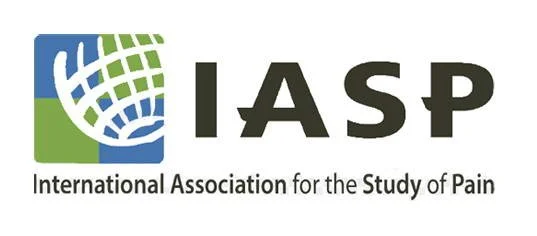Last Week In Weed Issue 16
Published March 29th 2021
In this week’s issue of last week in weed, we look at the Big Apple finally agreeing on legislation to ‘legalise’ cannabis, IASP questioning the efficacy and safety of ‘medical cannabis’ for the treatment of chronic pain, and finally, a consortium of British ‘Hemp’ and CBD associations/ organisations speak out against ACI/CMC recommendations to limit THC in ‘hemp-based’ CBD products in the UK.
New York agrees on legislation to ‘legalise’ cannabis
After several failed attempts over the last few years, the US state of New York finally looks set to ‘legalise’ cannabis after agreeing on how to regulate and tax the adult market through the creation of new legislation.
The new so-called “Cannabis Law” would seek to end the disproportionate policing of minority groups for low-level cannabis offences. It would also ring-fence a proportion of the tax revenue raised from cannabis sales to be invested in those same communities that were marginalised and left deprived by the failure of cannabis prohibition.
The passing of the law would create a new Office of Cannabis Management (OCM) that would be responsible for regulating and taxing the ‘legal’ adult consumption market in New York state. Governor Andrew Cuomo estimates that the tax revenue taken in by the agency could reach $350 million annually while potentially creating 30,000 to 60,000 jobs in the state’s newly ‘legalised’ cannabis industry.
“When this bill is finally voted on and signed, New York will be able to say we have finally undone damaging criminal justice laws that accomplished nothing but ruining people’s lives.” – Liz Krueger Democratic state senator
The new law would create a two-tier approach to licensing. It would create a diverse range of producers by preventing growers and processors from owning retail stores or dispensaries. There would also be licenses required for producers and distributors to ensure strict quality control, product safety, and consumer protection rights.
New York will also implement a socio-economic equity program to help facilitate the participation of those individuals disproportionately impacted by cannabis prohibition. Their goal is to have 50% of licenses held by minority or women-owned enterprises.
One of the more subtitle bits of legislation contained in the law is the proposal to change the tax regulation, replacing the currently universally used ‘weight-based tax model’ with a ‘total THC content tax model’ at the point of sale to the consumer. There would be different rates for THC from flowers than those of extracts. Is this not just a stealth sin-tax on THC?
Under the new law, all tax would be deposited into the ‘New York state cannabis revenue fund’ The money would be utilised to fund the continuation and enforcement of the regulations. The remaining tax would be split into three categories; Education receiving 40%, Community grants reinvestment funds receiving 40%, and finally, Drug treatment would get 20% of tax revenues.
So what does this mean for the average consumer in the big apple? Well, the personal possession limit when outdoors would be a generous (when compared to some other states) 3 ounces (84 grams) of flower or 24 grams of concentrates. Homegrown would be allowed but only three mature and three immature plants per person.
New York will also follow several other states by expunging previous cannabis convictions and reduce the penalties for violating the law by being in ‘over-possession’ or dealing. The move comes just a month after neighbouring state New Jersey also ‘legalised’ cannabis for adult use.
The exact wording and fine print are yet to be penned, but it is expected that the bill could be voted on as early as this week. That being said if it were to pass it is unlikely to come into effect until the start of 2022.
New York’s adult consumption market is estimated to be worth a whopping $4.6 billion by 2023 and $5.8 billion by 2027, according to analysis by the advisory firm MPG Consulting. Watch this space for more information and updates.
International Pain institute IASP questions the efficacy of ‘medical cannabis’ to treat chronic pain
The International Association for the Study of Pain (IASP) has raised questions about the efficacy of cannabis to treat chronic pain. In a statement published on their website, the IASP states that they have completed a comprehensive review of research on the use of Cannabinoids to treat pain.
Their conclusion found that due to a lack of sufficient evidence the association could not endorse the general use of cannabinoids for the treatment of pain. IASP also published a list of research priorities that need to be explored to correctly determine the efficacy and prove the safety of using cannabis for the treatment of pain to a level that satisfies the institution.
In the statement published on the IASP website, they link to a series of 13 published scientific articles that they say comprehensively review all of the relevant clinical research and lab data.
IASP states that these reviews took two and a half years to conduct and represent the total work of
their ‘Presidential Task Force on Cannabis and Cannabinoid Analgesia’ that ultimately informed their final decision.
“While IASP cannot endorse the general use of cannabinoids for treatment of pain at this time, we do not wish to dismiss the lived experiences of people with pain who have found benefit from their use”
“This is not a door closing on the topic, rather a call for more rigorous and robust research to better understand any potential benefits and harms related to the possible use of medical cannabis, cannabis-based medicines, and synthetic cannabinoids for pain relief, and to ensure the safety of patients and the public through regulatory standards and safeguards.” – Andrew Rice chair of the IASP’s Presidential Task Force on Cannabis and Cannabinoid Analgesia.
This announcement comes at the same time that the ‘Faculty of Pain Medicine of the Australian and New Zealand College of Anaesthetists’ have published their updated guidelines and recommendations for health care professionals in the two south pacific nations. They recommend that newly ‘legalised’ ‘medical cannabis’ products should not be prescribed to patients suffering from chronic non-cancer pain (CNCP) unless they are part of a randomised control trial.
According to a piece that recently appeared in The Guardian there have been plenty of studies looking at Tetrahydrocannabinol (THC) or a combination of THC and Cannabidiol (CBD) yet the IASP will not accept the studies as they have determined that the overall “quality, rigour, and transparency of reporting” of the benefits and harms needs to be improved across the board. We would require higher quality data, for example through randomised controlled trials, to determine the safety and efficacy of using medicinal cannabis for pain”
Last week also saw the Sapphire Medical Clinics being authorised by the Healthcare Improvement Scotland (HIS) to open its first Scottish clinic to prescribe cannabis flower and oil predominantly for the management and treatment of chronic pain. So if it doesn’t work why are so many people using it to relieve chronic pain, both legally and illegally daily?
Well, the issue comes down to the way the medical establishment conducts trials and ‘proves’ the efficacy and safety of drugs and treatments. The traditional randomised placebo-controlled studies do not fit with the way that cannabis interacts with the body and its Endocannabinoid system (ECS). Blind trials will not reveal the true potential of cannabis to treat chronic pain, however listening to the millions of daily consumers that have ceased opioids and other treatments in favour of cannabis, just might.
The treatment of chronic pain is by far the most dominant reason for patients seeking a prescription for ‘medical cannabis’ in Europe according to Prohibition Partners. With 1 in 3 people likely to suffer from chronic pain in their lifetime, the unregulated use of cannabis will continue to provide them relief until the establishment finally catches up with the culture, the science, and the times.
These are not the first such organisations to come out against cannabis and they won’t be the last. The potential diverse therapeutic benefits of cannabis make it a real threat to the maintenance drug paradigm and sickness industry perpetuated by big pharma and the medical-industrial complex.
Read the full statement from IASP here
A consortium of British ‘Hemp’ and CBD organisations speak out against ACI/CMC recommendations
A consortium of British ‘hemp’ (cannabis) and CBD organisations and associations have penned an open letter to voice their protest to proposals put forward by the ACI and CMC on the ‘acceptable limit’ of THC in ‘hemp-derived’ CBD products. The letter echoes points that I made in my Call to Arms letter last year and my recently updated CBD Blog. the letter laments the idea of creating yet more red tape and needless bureaucracy.
The letter opens with “We write on behalf of over 1000 domestic hemp and CBD businesses in the UK, whose members are from the associations and organisations listed below. We cannot support a number of the recommendations laid out by the ACI and CMC in their new report ‘Health Guidance Levels for THC in CBD products: Safety Assessment & Regulatory Recommendations’”
They go on to state that the proposed 0.03% THC limit in ‘hemp’ and CBD products would be a ‘disaster for the burgeoning domestic UK ‘hemp’ Industry’ and further create more red tape and hinder the development of a domestic ‘hemp’ industry with unnecessary bureaucracy and restrictions.
In the letter, it is stated that global temperatures are forecast to increase causing the levels of THC in currently approved ‘hemp’ cultivars with less than 0.2% THC to naturally increase cannabinoid production and increase its THC content. Many of the approved European varieties are already producing illegally high levels of THC – coming in at around 0.35% THC.
This is a problem faced by ‘hemp’ farmers around the world where THC limits are kept arbitrarily low. In this letter, the consortium suggests that the UK join the so-called ‘1% club.’ Many countries and regions around the world are currently lobbying to create a global ‘hemp’ industry that is defined as less than 1% THC but one that still ultimately criminalises the adult cannabis consumer through arbitrary legislation and regulations.
Toward the end of the letter, they state that CBD as a food supplement should be available to anyone and that all ‘hemp’ extracts and foods up to 0.2% THC should be completely removed from the Misuse of Drugs Act (MODA 1971) and exempt from controlled drug handling licenses.
‘While we support a maximum daily limit for THC consumption in ‘hemp’ products, we cannot support 0.03% as a maximum in food supplements, nor of the idea of Schedule 5 cannabis medicines for products containing 0.03-0.2% THC’
We are now just two days from the FSA deadline for novel food applications, so we will soon see how all of this plays out. I cannot help but feel that this is a somewhat short-sighted move that only furthers the division of cannabis consumers.
They could have taken this opportunity to fight for the whole cannabis plant and not just a handful of its cultivars. The proposed changes in this letter are to benefit the ‘hemp’ industry and not aid in the fight to finally end cannabis prohibition and return the plant to the people.
This ‘canna-lite’ consortium claims that the implementation of the ACI recommended 0.03% THC limit to import flowers and leaves would be incredibly restrictive and destroy a domestic industry worth up to £300 million annually. A number that is eclipsed by the potential tens of billions the UK could make if organisations like this were to put their weight behind a campaign to fully deschedule cannabis in the UK.
You can read the letter in full here
Written By Simpa For The Simpa Life



